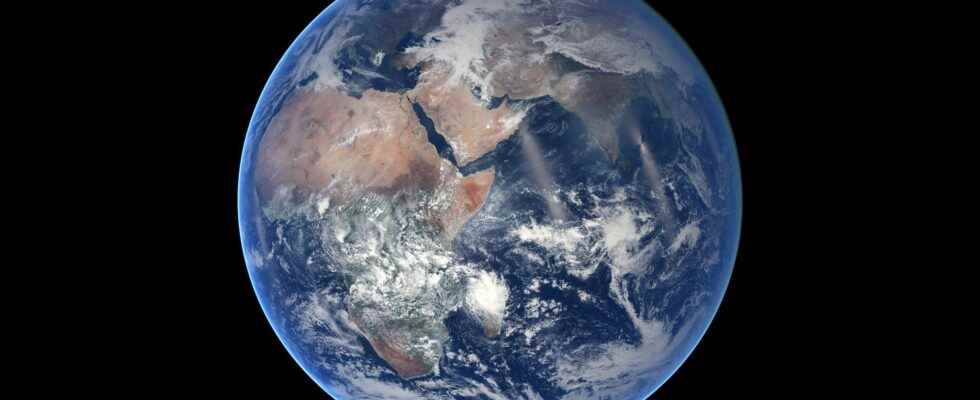Did the Earth’s heart stop beating before restarting by changing the direction of rotation? Like a Russian doll, our little blue planet is made up of several layers: a crust, an upper mantle, a lower mantle, a fluid outer core (rather viscous like plasticine) and, at 5,000 kilometers deep, a solid inner core the size of Pluto and composed mainly of iron. This “seed” is its thrilling sound, of which scientists have theoretical knowledge since, since Jules Verne, traveling to the center of the Earth remains impossible.
For several decades, geophysicists have been using satellites to analyze variations in the Earth’s magnetic field or to study gravity. They can also count on luck, via plate tectonics which, at the level of active faults, rises to the surface of the materials of the upper layers of the inner mantle. But the most effective technology remains the analysis of the propagation of seismic waves: “It is particularly demanding since it involves working on deep earthquakes which take place in the same place and at different times, explains Hugo Lecomte from the Earth & Environment Institute of Strasbourg (Ites). We are talking about doublet earthquakes.” It is a way of measuring the propagation of the seismic wave from the mantle to the seed: if the path it takes has varied, this means that the internal structure has changed, in particular the density and the composition.
Using this technology, Chinese researchers have just published a study in the journal Nature Geoscience which surprised the whole community. According to them, the seed almost stopped in 2009, before changing direction of rotation. By scrutinizing the statistical data of the last sixty years, Xiaodong Song and Yi Yang ensure “that the central core is, in relation to the surface of the Earth, in rotation in one direction then in another, like a seesaw”. And, they estimate, according to a cycle of “about seventy years”. “Previous work has already shown the variability of the rotation time of the seed and since then there have been many debates on its amplitude, explains Séverine Rosat, researcher at Ites at the University of Strasbourg. This study is attractive but I remains skeptical of the idea of a seventy-year cycle when based on such a short data time.”
“She didn’t stop”
On the hypothesis of a stop of the heart of the Earth, the Frenchwoman who participated in the review committee of the article published in Nature Geoscience, specifies that it is a differential movement: “Before it was thought that the seed rotated faster than the mantle. There, the geophysicists of Peking University speak of a synchronous rotation, that is to say say it slowed down to the same speed as the mantle. But it didn’t stop.”
As for the inversion of the direction of rotation, the specialists consider it very “speculative”. Moreover the text suggests it without affirming it by insisting on the slowing down of the speed of the seed. In any case, whether it is a slowing down or a reversal of the direction of rotation, one and the other would not change anything in the geodynamics of the Earth. “They have no consequence on us as the variations are infinitesimal”, assures Séverine Rosat. On the other hand, this work brings new hypotheses on the coupling mechanisms which, on a larger scale, could influence the magnetic field and the length of the day: “If the seed rotates more or less quickly than the mantle, this could, theoretically , destabilize the way our planet turns on itself, points out Hugo Lecomte. And therefore include variations of the day but which would be of the order of a millionth of a second.
Ditto with regard to the generation of the magnetic field by the Earth. The latter allows us to have a magnetic shield protecting us from the rays of the Sun. A sci-fi scenario already written for the film would then emerge. TheCore (2003) where the blue planet gradually loses its famous heat shield and risks being “roasted” by the winds and solar flares. “This study provides food for thought for our geodynamic models. Nothing more”, concludes Séverine Rosat. Hollywood science fiction is therefore far from reaching reality.
